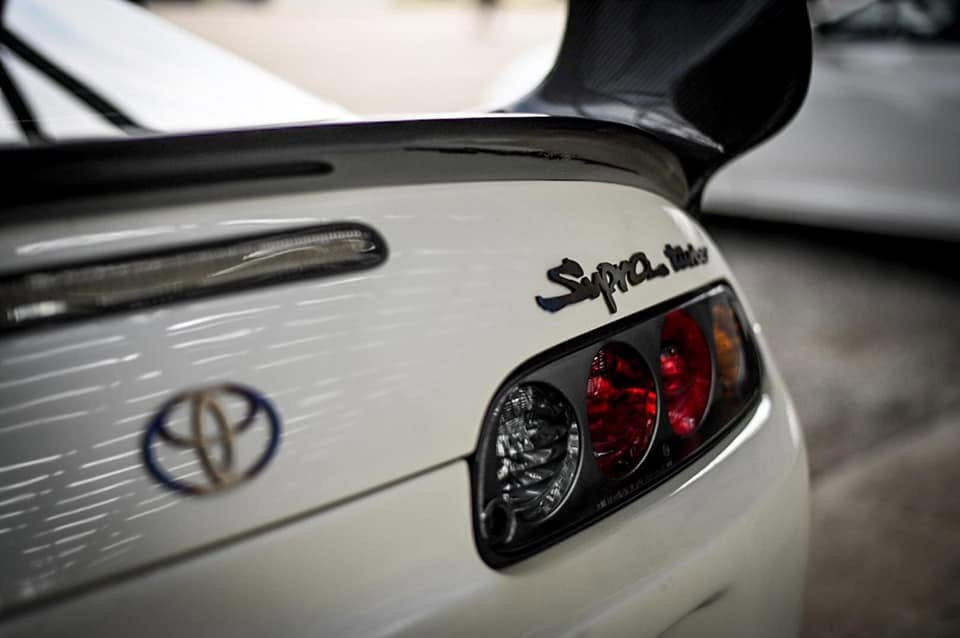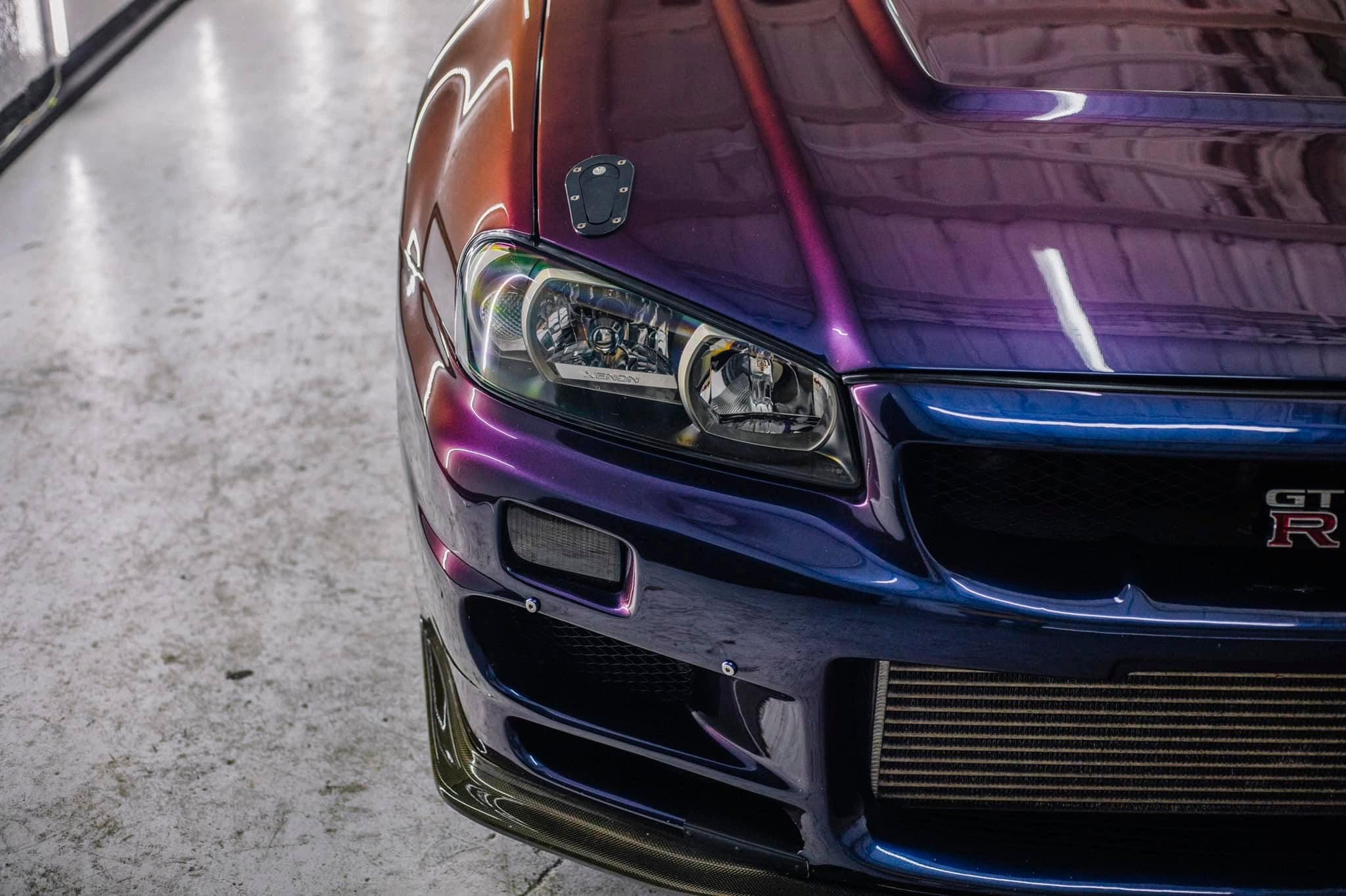
Why Enthusiasts Love the MK4 Toyota Supra, Mazda RX-7, and Nissan GTR?
Share
I. Introduction
In the 1990s, Japan didn’t just manufacture sports cars—it defined a movement. The Japanese Domestic Market (JDM) golden era unleashed a wave of performance vehicles that weren’t just fast—they were engineered with precision, built to last, and primed for modification. It was a decade where cutting-edge technology met obsessive craftsmanship, and the world took notice.
Among the machines that rose above the rest, three have become permanent fixtures in enthusiast lore: the Toyota Supra MK4, Mazda RX-7 FD, and Nissan GT-R (specifically the R33 and R34). These cars didn’t just outperform expectations—they rewrote them. They’re not just vehicles anymore; they’re cultural touchstones.
What unites these icons isn’t just horsepower. It’s engineering innovation, incredible tuning potential, and a lasting cultural impact that still shapes car communities across the globe. This is what makes them timeless—and why they continue to inspire new generations of enthusiasts.
II. The MK4 Toyota Supra: Engineering Overkill Turned Icon
2JZ-GTE Engine: Overbuilt and Underrated
At the heart of the MK4 Supra lies the 2JZ-GTE, a 3.0-liter twin-turbocharged inline-six that has earned near-mythical status. Its cast-iron block and forged internals were engineered to endure far more power than its stock output. Officially rated at 276 horsepower (a nod to Japan’s gentleman’s agreement), the 2JZ’s real capabilities are far greater, learn more here.
This is an engine you can beat on, build up, and boost beyond recognition. Its tolerance for punishment and headroom for performance make it one of the most beloved platforms in tuner history.
Tuning Potential: From Street Sleeper to 1,000+ HP Hero
The 2JZ’s tuning capabilities are the stuff of legend. With bolt-on mods—intake, exhaust, ECU—you can quickly unlock hidden horsepower. Add a big single turbo, upgraded fuel system, and standalone engine management, and you’re staring down four-digit power figures.
Aftermarket support for the Supra is massive. The global availability of tuning parts, proven build paths, and deep community knowledge make the car an accessible gateway into serious performance.
Cultural Impact: From Underground to Auction House
No car has benefited more from cinematic exposure than the Supra. Its role in The Fast and the Furious catapulted it from street legend to pop-culture royalty. Today, clean examples command six figures at auction, with rare trims or factory options pushing prices even higher.
The MK4 Supra is more than just fast—it’s an icon with mainstream appeal and enthusiast credibility.
Design: Form Follows Function—and Still Turns Heads
The MK4’s styling is both aggressive and aerodynamic, with a wide stance, flared arches, and that unmistakable factory wing. It’s a design that has aged gracefully, looking as relevant on the street today as it did three decades ago. The Supra’s silhouette is instantly recognizable—and endlessly desirable.
III. The Mazda RX-7: Rotary Power, Pure Feel
Rotary Engine (13B-REW): Unique and Addictive
The RX-7 FD isn’t just another sports car—it’s a rebellion against convention. Powered by the 13B-REW, a twin-rotor rotary engine, the RX-7 offers a driving experience unlike anything else on the market. Lightweight and compact, the rotary engine allows for a nearly perfect weight distribution and razor-sharp handling.
Its rev-happy nature and otherworldly exhaust note make it a visceral experience—raw, immediate, and immersive.
Performance Engineering: Sequential Twin-Turbo Mastery
Mazda’s engineers delivered a feat of engineering in the RX-7’s sequential twin-turbo system. It offered the torque of a big engine with the responsiveness of a small one—one turbo spools early, the second kicks in later, offering a linear powerband well ahead of its time.
Combined with a lightweight chassis and rear-wheel-drive layout, the RX-7 became a driver's car in the purest sense.
Driving Experience: Precision and Poise
Few cars offer the kind of driver connection the RX-7 delivers. Every input—steering, throttle, braking—feels immediate and intimate. It rewards skill and punishes sloppiness, making it a favorite among those who value engagement over lap times.
Design Legacy: Art in Motion
The RX-7 FD is widely regarded as one of the best-looking cars of the '90s. Its flowing lines, teardrop shape, and minimalist details give it an organic, almost timeless beauty. Pop-up headlights add a nostalgic charm, while the compact proportions hint at the precision within.
IV. The Nissan GT-R: The People’s Supercar
RB26DETT Engine: Twin-Turbo, Bulletproof, Beloved
The RB26DETT, a twin-turbo inline-six with a cast-iron block, is the beating heart of the R32, R33, and R34 GT-Rs. Designed with racing in mind, this engine became the backbone of Nissan’s motorsport dominance and a cult favorite among tuners. Like the 2JZ, the RB26 is capable of serious power—easily crossing 600, 800, or even 1,000 horsepower with the right upgrades.
Its iron block, forged internals, and short-stroke design make it a reliable, high-revving platform.
R33/R34 GT-R: High-Tech Heroes
These GT-R generations introduced advanced features that were years ahead of their time:
- ATTESA E-TS AWD system: Active torque split for max grip
- Super-HICAS: Four-wheel steering for superior cornering
-
Advanced aerodynamics and chassis rigidity
The R34, in particular, became a technological flagship—smart, fast, and capable of embarrassing much more expensive machinery.
Performance Benchmark: Real-World Supercar Slayer
The GT-R earned its “Godzilla” nickname by dominating tracks and proving that a Japanese car could outgun European exotics. It offered a track-ready experience in a street-legal package—and unlike most supercars, it was usable, affordable (at the time), and endlessly tunable.
Cult Following: Global Devotion, Local Scarcity
While the GT-R was never officially sold in the U.S. during its heyday, that only fueled the mystique. Gray market imports, video game appearances, and street racing legends cemented its status in the hearts of enthusiasts.
Today, as R34s become legal for import under the 25-year rule, demand is skyrocketing—and so are prices. The GT-R has officially become a collector’s item, with the performance to back up its reputation.
V. The Rise of JDM Culture
90s Revolution: Precision Over Displacement
While the West was still clinging to big engines and brute force, Japan engineered a new kind of performance ethos in the 1990s—one that valued technology, balance, and efficiency over sheer displacement. The MK4 Supra, RX-7, and GT-R were products of a generation that saw turbocharging, high-revving engines, and precision handling as the new benchmarks for performance.
This era redefined what a “sports car” could be. Smaller engines, lighter chassis, and advanced electronics weren’t seen as compromises—they became competitive advantages.
Global Spread: Pop Culture, Print, and the Internet
What started as a domestic movement exploded internationally thanks to a perfect storm of exposure:
- Movies like The Fast and the Furious gave the Supra and GT-R household-name status.
-
Magazines like Super Street and Import Tuner gave readers a front-row seat to builds around the globe.
Online forums like SupraForums, RX7Club, and GT-R Register became hubs of knowledge, build threads, and community support.
JDM culture grew because it was accessible, modifiable, and aspirational—an invitation to build your dream car, your way.
Cultural Shift: Redefining Performance
These cars shifted the definition of performance from top-end luxury and exclusivity to grassroots engineering and driver engagement. You didn’t need a Ferrari to go fast—you needed a laptop, a turbo kit, and a well-tuned 2JZ or RB26.
This cultural shift still shapes how performance is measured today: power-to-weight, lap time, tuner-friendliness, and driving feel—all ideals born from the JDM movement.
VI. Legacy and Lasting Influence
Aftermarket Boom: The Business They Built
The Supra, RX-7, and GT-R didn’t just ignite fanbases—they launched entire industries. From turbo kits to ECU tuning platforms, these cars drove demand for performance parts and innovations that still fuel the aftermarket today.
Companies like HKS, Greddy, A’PEXi, and countless others built their reputations by creating parts for these platforms. Their influence continues in the form of upgraded fuel systems, standalone ECUs, forged internals, and custom aero kits.
Spiritual Successors: Searching for the Next Icon
The automotive world is still trying to replicate the magic:
- Toyota’s B58 engine—found in the GR Supra—is already drawing comparisons to the 2JZ for its tuning potential and durability.
- Mazda’s rotary engine has never been forgotten. Rumors of its return continue to swirl, driven by the RX-7’s cult following.
-
Nissan’s R35 GT-R evolved the platform with brutal performance and tech—but many still revere the analog nature of the R34.
These modern machines pay homage to their predecessors, but none have fully stepped out of their shadows.
Market Impact: Rising Values and Collector Status
What were once attainable tuner cars have now become blue-chip collector vehicles. Clean MK4 Supras and R34 GT-Rs regularly fetch six-figure sums. RX-7s in original condition are becoming increasingly rare and sought after.
Enthusiasts are restoring rather than parting out. Preservation has become as important as performance. These cars have transitioned from street legends to cultural artifacts, and the market reflects that shift.
VII. Conclusion
The MK4 Toyota Supra, Mazda RX-7, and Nissan GT-R aren’t just fast cars—they’re symbols of a golden era. Built with vision, designed for drivers, and born from innovation, they transcended borders and generations to become something more: icons.
What makes them timeless is their balance of engineering brilliance and emotional connection. Each car speaks to a different kind of enthusiast—the builder, the purist, the tactician—but they all evoke the same passion.
Their influence endures not just because of what they were, but because of what they still inspire: the thrill of mechanical mastery, the joy of driving, and the belief that performance is meant to be personal. Our mission at J-Spec Garage is to provide JDM enthusiasts with the top brands, top parts, and the top support in the industry. Shop now to keep your ride in the best performing condition.



